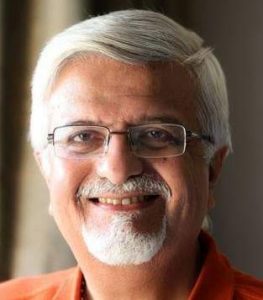By J Mulraj
Aug 8-14, 2021
Mistakes policy makers have made
And oh! what a tangled web we weave when first we practice to deceive!
There are several examples of policy mistakes made, which land the country in a ditch, and subsequent attempts to extricate themselves from the bad situation that ought never have been created.
The Telecom sector is a prime example, but there are others. The telecom sector was opened up to mobile telephony in 1994, and spectrum auctions were conducted, with 2 winners being awarded spectrum for each circle. In doing so, the then policy makers did not heed the experience of a similar flawed policy being adopted by Europe, which they later corrected. No, we had to make the same mistakes and fall into the same ditch, instead of learning from experiences of others.
The reason the policy was flawed was because it raised costs for all. The duopoly reduced competition, and raised costs for consumers. Telecom costs were as high as Rs 16/minute, payable by both the caller and the receiver of the call! This was because the cost of spectrum thus allocated was too high. Net net, nobody was happy. Consumers had to pay high charges. Telecom operators did not make money due to the high calls and thus lower consumption, and the Government, having got its pound of flesh from high spectrum fees, did not see any economic gains from the policy.
So, as Europe had done earlier, and what India ought to have done too, the GOI switched, in 1999, to a revenue sharing model. Instead of a high upfront cost for spectrum, the telcos paid usage charges for use of spectrum (8% of revenue) and another 5% for Universal service obligation, to fund expansion into rural areas.
This shift worked brilliantly. Competition was not restricted, there could be more than 2 players per circle, and this brought down cost to under Rs 1 per minute, the lowest in the world, as usage grew exponentially. Consumers, who had to wait for years in order to get a fixed line connection from a moribund MTNL/BSNL, had the freedom to get a connection and take the phone with them. Huge economic gains followed (fisherfolk could, e.g., make a call from their boats, and sail to whichever market offered the best prices for their catch). The operators made money, and invested it in other companies e.g. setting up telecom towers. Consumers were happy with lower costs, and Government got higher revenue, through sharing, than they would have, through spectrum auctions.
But policy makers are unhappy when everyone else is.
The Government then made a claim on Vodafone, which had, in an overseas transaction, bought the controlling interest in a telco in India, from Hutchison Whampoa, of Hong Kong for $ 11 b. The claim was made for not deducting tax at source which Hutchison ought to have paid, according to GOI, on the capital gains it had made in India. Tax laws then did not levy capital gains on overseas transactions. In order to buttress its claim, the GOI retrospectively amended the law, to clarify its intention to levy capital gains tax on any gain made from a productive asset in India.
It lost the case in international arbitration.
So, perhaps to pressure telcos, the definition of revenue for purposes of computing the Government share, was adjusted to include non-telecom related revenues, resulting in coinage of the term AGR (adjusted gross revenue). Claims on the basis of AGR were made on Vodafone-Idea, Airtel and, much smaller amount as it was a late entrant, on Jio.
This led to absurd Pavlovian situations! Notices had also to be sent to public sector undertakings (PSUs) which had bought some spectrum, mainly for internal usage. Such as GAIL, for their gas transmission lines, and Power Grid, for their electricity transmission grid. The farce was highlighted with a Rs 1.83 lac crore charge was slapped on GAIL, taking into account its income from gas transmission!
Naturally GAIL, PGCIL and other PSUs objected. Having fallen into the ditch created by themselves, policy makers had to try to extricate themselves. So the PSUs were exempted.
But why create such ditches in the first place? The Government has had to backtrack on the retrospective amendment for tax claim, and is passing legislation seeking never to invoke it in future. Perhaps the ignominy of having Government owned flats in Paris attached by Cairn, which won in similar arbitration, resulted in a sober review of the options.
The scramble for tax collection, and the absurd stretches of rules to claim more tax, is the result of constant budget deficits, and the resultant increase in Government borrowings to meet them.
The main reason for this is the interest cost on previous borrowing. In 2020-21 interest cost of Rs 8 lac crores, accounted for 23% of estimated expenditure. It was far more than the next largest item, defence, (Rs 4,78,000 crores) and left little for things like education (Rs 93,000 cr) and healthcare (Rs 73,000 cr).
Why has nobody thought of financial engineering to tackle the interest cost? One would have expected highly capable policy makers and bureaucrats to have done so.
An out-of-the-box idea on financial engineering to address debt servicing cost:
Suppose the RBI were to announce a scheme, under which anyone who buys existing GOI bonds, and surrenders them before March 31, 2022, to RBI, agreeing to forgo all interest and repayment on the bonds, would be entitled to a weighted average deduction from income for tax computation. The deduction would be such as to be attractive to the investor and not result in a huge tax sacrifice.
What would happen would be the following:
A tax arbitrage: Weak banks with zero or low tax rates would be able to sell their bonds to generate resources for lending. Those with high tax rates, like profitable foreign banks, would buy them, to claim the tax deduction.
The resultant transactions would help create a yield curve.
A Time arbitrage: The GOI loses tax revenue now, but recoups it in future as it does not need to service the debt. This, in turn, improves its debt/GDP ratio and, over time, its credit rating.
Consider the 6.18% 2024 bond. A calculation shows that if the GOI offers a deduction of 5X the face value of the bonds surrendered by an investor with a 35% tax rate, it would balance the shortfall in tax with the NPV of the outflows on interest and repayment. It should offer a bit more, to make it attractive for an investor.
So, were it to succeed, the debt series would be wiped out by end of year, and the outstanding debt position improve. This can be repeated, if it worked, with other series of debt. Why not think of and try such out of the box ideas?
Such ditches on the economic road should not be dug. India has good news to offer in several areas.
July exports, e.g. are up a whopping 49%, to $ 35 b. BARC has developed, as per this article, super absorbent cotton to tackle oil spills, the first time this has been done. It not only absorbs the spilled oil, but also makes it reusable, which no other existing method does.
The BSE sensex rose 162 points over the week, to end at 55,437.
In addition to foreign institutional investment flows the domestic inflow, via mutual funds, is very encouraging. The mutual fund industry saw a net inflow of Rs 22,500 crores in equity linked schemes, in July 2021.
There used to be a time when, during a slump, only UTI and LIC were asked to come to the rescue. But now the fund industry is of large size and adds stability.
In fact, even in April 2020, after the sharp fall, the equity linked schemes saw a net inflow of Rs 6,108 crores.
China has, for its own reasons, clamped down on its tech and edu-tech companies, through changes in regulation. As a result, US institutional investors, and Softbank, the biggest start up investor, have decided to ease investment in Chinese tech/edu-tech companies. This can be to India’s benefit.
But to reap such benefits, bureaucrats and policy makers must act responsibly and logically, and not create ditches on the road to economic prosperity.
Picture Source: https://choosethecross.com/?p=514











































COMMENTS